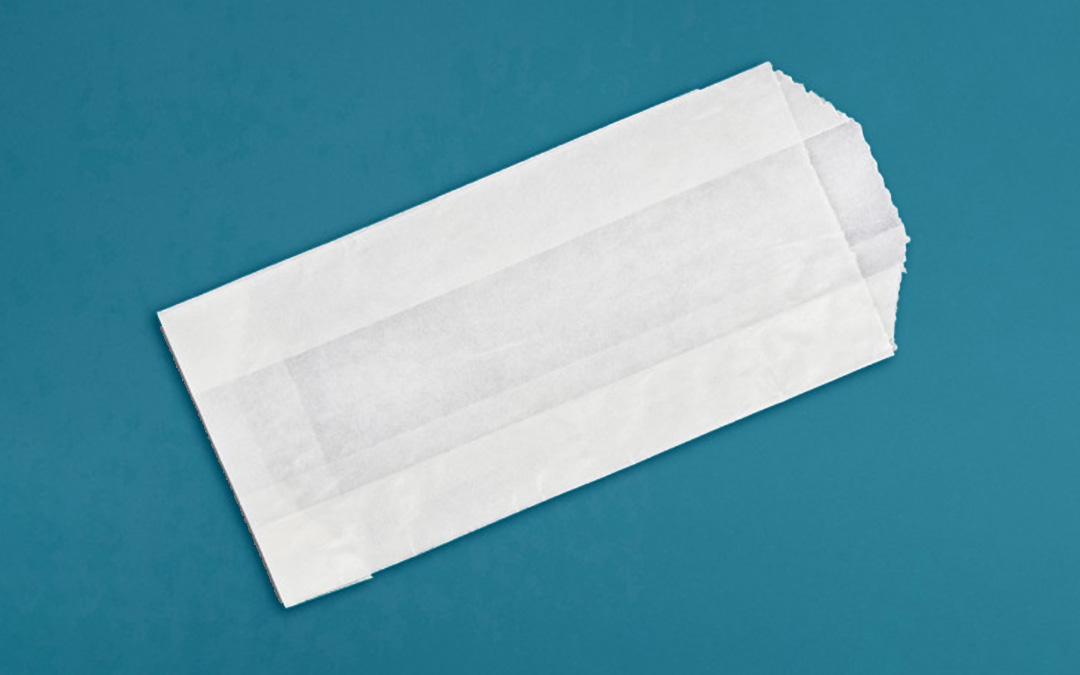A little while back, the Mullen Test and ECT duked out their differences in the ring. And recently, corrugate and chipboard sat down and hashed out their differences. Now, waxed bags and glassine bags are looking to set the record straight—yes, they’re similar but they serve different packaging purposes. So, let’s take a look at waxed bags vs glassine bags, and what makes them stand apart from each other. Otherwise, we hear one’s considering dyeing their hair to end all the confusion.
Dry Waxed Bags
Waxed paper bags are most often used as food packaging. They’re coated in paraffin wax during manufacturing, making them grease-proof and ideal for food that’s oily, greasy or covered in condiments. They’re also commonly used for industrial needs, protecting products that need moisture and pollutant protection. The paraffin wax makes the semi-transparent bag feel thicker, more substantial, and smoother in the hand. They’re also easily printed on and a solid choice for food trucks, bakeries and concession stands looking to promote their business.
Their one caveat is that they’re not immediately recyclable or compostable. The wax coating is so effective that it takes a good deal of time before they begin to biodegrade. Therefore, their usefulness in your packaging strategy depends on your packaging needs or your eco-friendly requirements.
Best used for… subs, tacos, sandwiches, greasy foods, doggy bags, industrial needs, retail products.
Glassine Bags
Glassine is a smooth and glossy paper that’s made air, water and grease resistant through a process called supercalendering. After the paper is pressed and dried, it’s run through steel and fiber-covered cylinders that flatten the paper fibers so they’re all facing the same direction. The resulting glassine bags are great for making a great first impression.
The smooth, translucent nature of glassine showcases what’s inside it, whether that’s cookies, candies, candles, soaps or other handmade goods. They can be purchased in different colours, easily printed on, and accept branded labeling—giving you plenty of options for your packaging strategy.
Finally, as they’re not waxed or chemically-finished during manufacturing, glassine bags are fully recyclable, compostable and biodegradable.
Best used for… baked goods, candies, nuts and other confections, handmade and high-end items.
Waxed Bags vs Glassine Bags: What’s the Best Choice?
Like most other packaging dilemmas, the choice between waxed bags vs glassine bags can be solved through a few qualifying questions:
- Are you packaging edible goods, or industrial and retail products?
- Are your chosen goods dry, greasy, or moisture and pollutant-phobic?
- Are you packing room temperature goods or serving hot food items?
- Are you fine with standard packaging, or are you looking for a more branded appearance?
- Are you interested in using eco-friendly packaging supplies if you can?
By now, we bet you’ve decided exactly which of these paper bags you want for your packaging needs. We also bet waxed bags and glassine bags are breathing a sigh of relief, as their days of being confused for one another are potentially coming to an end.
Whether you’re interested in the differences between waxed bags vs glassine bags, or the compelling history of the Mullen Test and ECT, The Packaging Company and our knowledge center will help set you and your business down the right packaging path.





Would the glassine bags work for storing evidence like blood samples, clothes, small items without compromising or degrading them? My friend works for the police department & want to help find ways to organize better.
Hi Mary, glassine bags aren’t designed for those kinds of materials.
Would glassine envelopes be ok for candle melts?
Hi Katey! Yep, they’re great presentation packaging for candles and soaps. Keep in mind that glassine paper is unwaxed and can pull oils out of candles if left in storage for extended periods of time.
Hi, would glassine bags be suitable for packaging jewellery? Would they cause tarnishing?
Hi Julie! Glassine bags are often used for jewelry and other trinkets. There’s no wax in glassine paper, so it wouldn’t be a source of tarnishing.